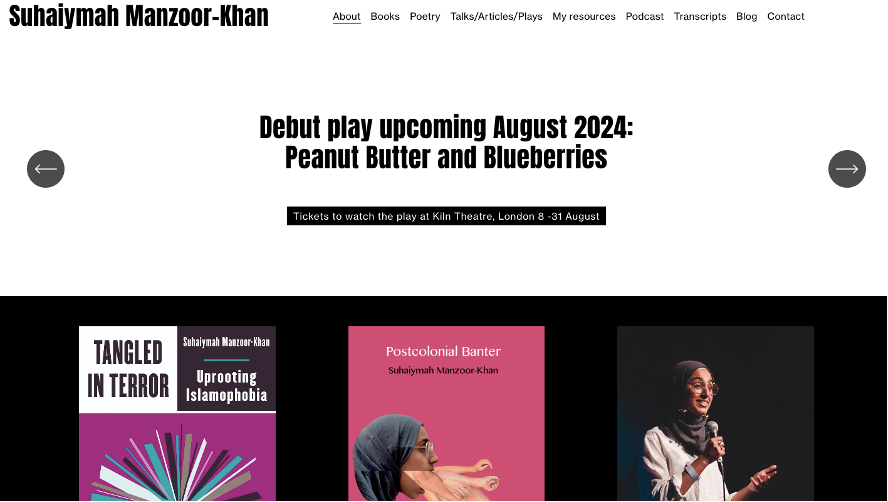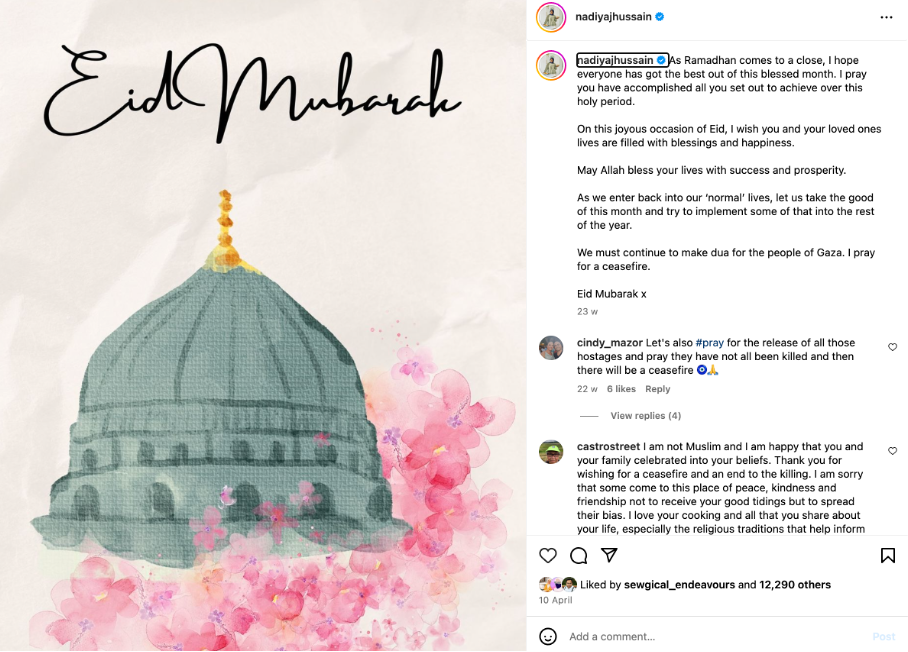The Prominent Figures collection on the Digital British Islam archive displays the websites of a selection of prominent British Muslim figures. We have chosen a range of individuals from diverse professions and backgrounds to showcase the diversity of Muslims in public life. The list is not exhaustive nor representative but provides a snapshots of the types of websites led by such figures. While there is overlap with other collections in the archive, the websites in this collection differ in that they represent a particular individual rather than a group or organisation – the majority of websites in the archive are of the latter type.
The individuals covered in these pages include intellectuals, journalists, sportspeople, writers, religious scholars and online influencers. Some of these have more of an online following than others but all are high-profile in some way whether through featuring on television (e.g. Ajmal Masroor, Nadiya Hussain), being nominated to lists of influential Muslims (e.g. Mohammed Amin), or via their own YouTube channels (e.g. Mohammed Hijab). It is worth noting that since the archive collects websites and not social media pages (for reasons we have outlined here), this collection only includes individuals who have a personal website. There are many prominent individuals who rely on social media to interact with followers and do not have a personal website – these fall outside the scope of our archive. Some of these individuals may have organisational websites which are captured in other collections (e.g. Muslim Womanhood led by female scholar Fatima Barkatulla in our Gender-Women collection ).
A common role of the websites in our collection on Prominent Figures seems to be to provide a profile or biography of these individuals with most having an ‘About Me’ (or similar) page. All sites seem to have a ‘Contact’ section too displaying how these sites are a platform for learning about and communicating with these figures. Some sites feature a blog section allowing audiences to learn more about each individual and their views as well as displaying samples of their writing – several of the websites captured are from those describing themselves as writers or journalists.

One insight from these pages pertains to the varying ways Muslims display their Muslim identity online. The ‘About Me’ pages are a useful source to explore this. For some, their ‘Muslimness’ is very much at the forefront of their online persona on their websites. This is expectedly true for individuals for whom Islam is central to their occupation – for example, Hamza Tzortzis who leads an organisation delivering educational courses and lectures related to Islam – but it is also prominent on other sites. Suhaiymah Manzoor-Khan is well-known as a poet and writer, and there are several mentions of Islam and Muslims on her homepage which provides her biography (screenshot below). By comparison, celebrity chef Nadiya Hussain, who rose to prominence after winning TV competition The Great British Bake Off in 2015, has no explicit mention of Islam or Muslims on her website profile. Both individuals are non-white, hijab-wearing women so their identity as Muslims is implicit in other ways yet there are differences in the way they present themselves on their websites.
Some of this may be down to the role Islam plays in their profession, with Suhaiymah, for example, discussing issues like Islamophobia in her poems and writing. However, there are inevitably differences in the way people portray themselves on various platforms online perhaps pertaining to their target audience or the role each platform plays. Discussions of Islam and Muslims can be observed more on Nadiya’s Instagram page than her website, an example being an Eid Mubarak message shared at the end of Ramadan 2024 (screenshot below).

This archive collection also suggests that such websites are playing an increasingly diminishing role for such individuals. Blog-type sections on several sites do not seem to have been updated for some time. Journalist Remona Aly’s ‘Articles’ section has not been updated since 2021 despite Remona having published several pieces since then as displayed on her Guardian [https://www.theguardian.com/profile/remona-aly] and LinkedIn profiles [https://uk.linkedin.com/in/remona-aly-2231651a]. The websites of other individuals seem to have disappeared completely since they were archived on our database in 2023. Both Yasmin Alibhai-Brown and Naima B. Robert’s sites are examples of this with their websites no longer displayed in the 2024 capture. Both individuals have regularly updated social media accounts however – see Na’ima Robert’s instagram and Yasmin Alibhai-Brown’s X page. It might be inferred from this that social media and websites of organisations like the Guardian are replacing the personal website as cheaper – often free – and easier to maintain alternatives.
The Prominent Figures collection of our archive helps us explore the varying ways that well-known British Muslims present themselves online and provides interesting avenues of comparison with other digital platforms like social media. It also, however, points towards the diminishing role of personal websites in a vast digital landscape that provides numerous convenient and potentially more effective alternatives. Further insights from this collection will be drawn out in the course of the Digital British Islam project. We are open to further suggestions of websites to add to the archive and you are welcome to contact us with further ideas.
